Belmore Court: Your next best stay in the West
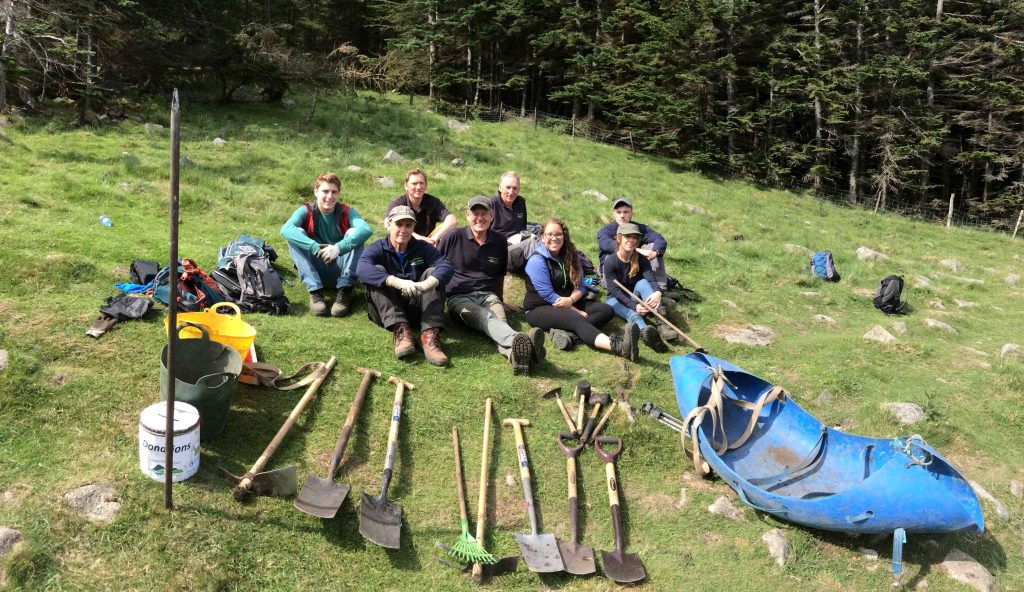
Would you like to sponsor this article?

Meet the Mourne Mountain Path Team!
Deep within the Mourne Mountain range, there is a small but dedicated team working throughout the year, in all weathers, repairing mountain paths and tackling erosion and drainage problems. It’s a tough job – and they do it voluntarily! Meet the Mourne Heritage Trust’s Volunteer Path Team.
READ: A Ring of Bright Waters: a Mourne Hydrotrek
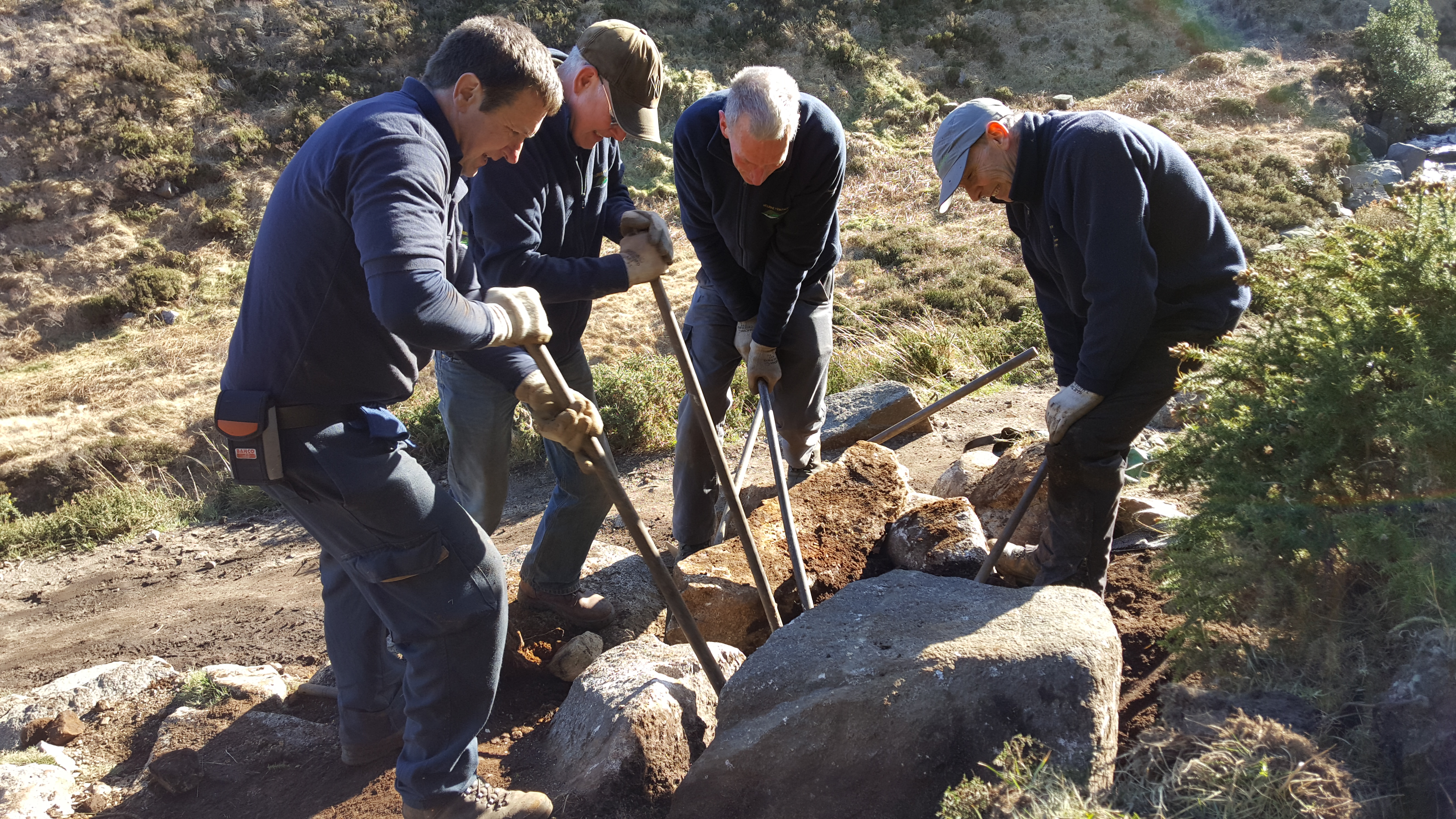
READ: Paving the way in the Mournes
Peter, Roy, Alan and James are the foremost members of a small but dedicated group of volunteers with the Mourne Heritage Trust. Each week, the team, alongside MHT Project Officers Phil and Katie, carry their tools deep into the Mourne Mountains in order to repair and maintain the paths used by walkers.
Relying on skill, experience and some tricks of the trade, the team work together to shift heavy stones and boulders without the help of diggers or machinery. The methods used by the path team are centuries old and were tried and tested by the stone and quarry men of the Mournes. Pinch bars, shovels and azades (digging hoes) are the tools of choice, which have an added benefit of lessening the impact on the environment they seek to protect.
The Mourne Mountains are growing increasing popular, with more and more people setting out to explore the charismatic peaks of the infamous mountain range. But with more people comes more damage: the mountains are a protected landscape with over 7500 hectares of land protected under both National and European designations. This is due to the range and quality of rare heathland vegetation found on the Mournes, which provide habitats for creatures such as the Red Grouse, Irish Mountain Hare and the Dark Green Fritillary Butterfly.
The increasing number of visitors to the area is a threat to this landscape, as the plants and soils which make up the heathland environment are very fragile and sensitive to trampling. Mountain paths are therefore essential for the Mournes, as they help guide people through scenic areas without causing damage to the sensitive vegetation. Most paths also have historical significance, following old shepherd, quarry or even smuggler routes through the Mournes and reflecting vibrant history of the area.
The path team come from a wide range of backgrounds, but all share a deep connection to the mountains, and a strong sense of duty to protect the Mournes for many years to come.
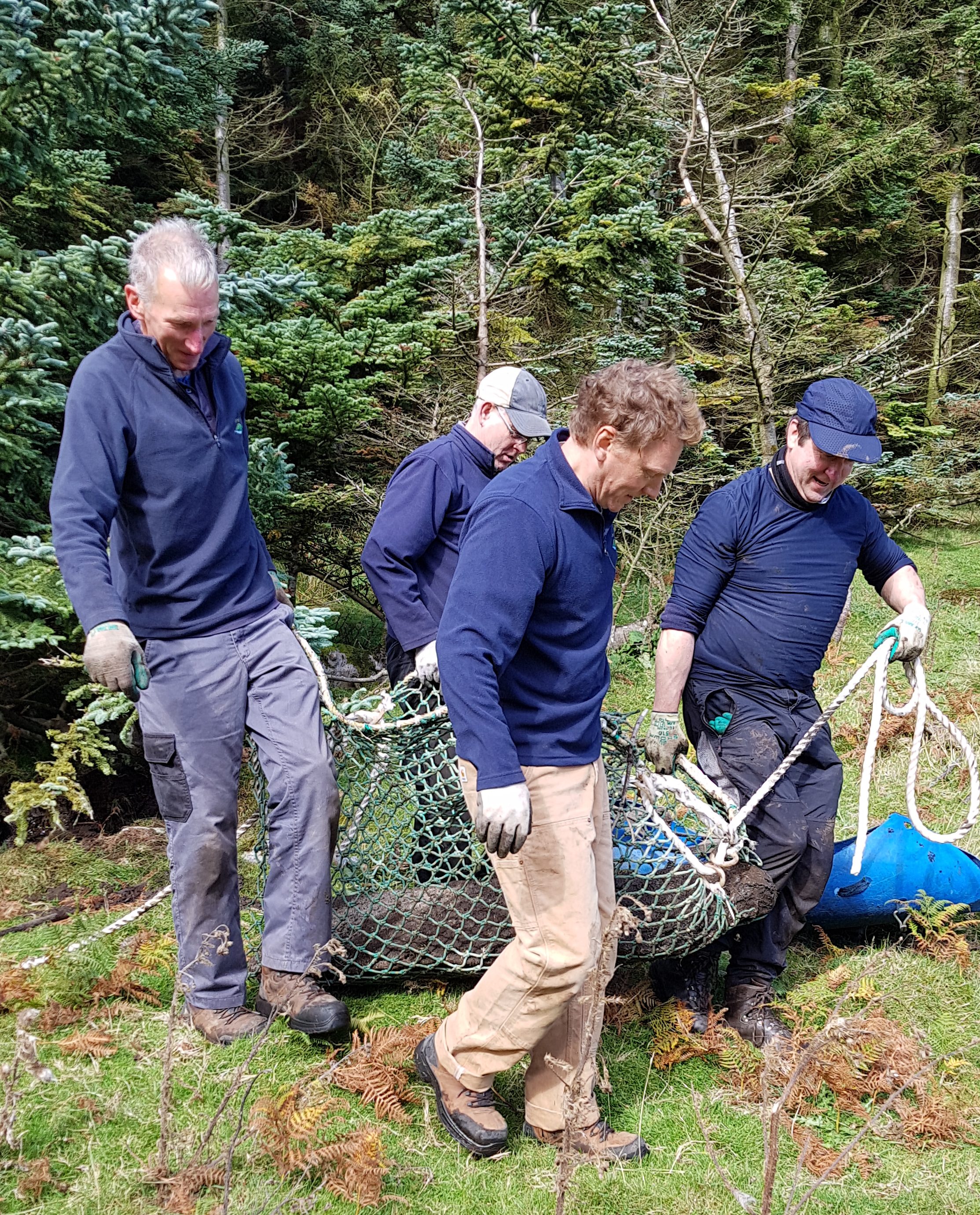
Peter has been volunteering with Mourne Heritage Trust for almost a decade. As a hill walker for forty years and mountain leader with the Wee Binnians walking group he has spent a lot of time in the beautiful Mournes.
A retired Biology teacher, he has a special interest in the environment of the mountains and the forests of the area, and when the opportunity arose he started volunteering with MHT carrying out a vegetation survey across the central mountains and over the years since, helping in a wide range of activities including working on the Youth Rangers programme, sharing information and methods of survey of the diverse ecosystems that are in the Mourne area.
In recent years he has helped to develop a volunteer Upland Path Repair team which meets every week to carry out work on the popular trails.
“If you have spent a lifetime enjoying the hills and beauty of Mourne it is rewarding to feel you are giving something back to a wonderful landscape.”
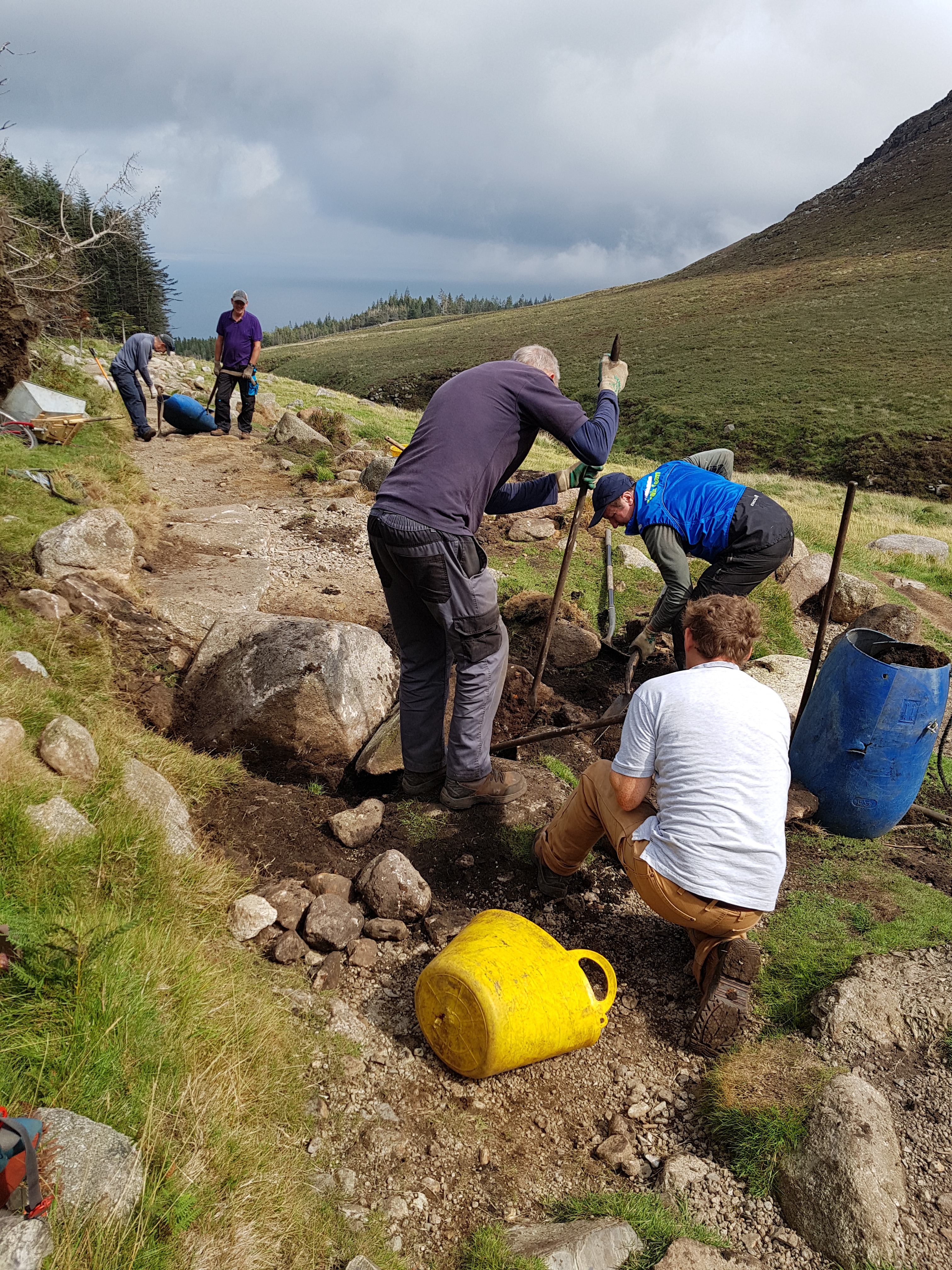
Alan is a semi-retired Doctor from Belfast, and joined the Path Team in 2015. For Alan, the path work is a hobby with numerous benefits,
“It is a great team to work with, and the physical work in the outdoors is a great way to de-stress and re-focus. I have enjoyed walking in the Mournes over the years and it feels as though I am able to give something back by volunteering. Also, after completing a few metres of path, you have hopefully left a bit of a legacy for future generations!”
Roy is a keen outdoorsman. As a retired software developer he spent many years in front of a computer. Now he is keen to make up for lost time. During the week, Roy volunteers for numerous charities, enjoying outdoor roles as a path builder and as a gardener, and spends his free time either walking or on the bike!
“It’s nice to get out and about for just a couple of hours a week to give something back to my favourite hiking spot.”
James spent his childhood beside Carlingford Lough between Rostrevor and Warrenpoint at the foot of the low Mournes.
“I moved away to study and later to work, and it was only when I move from the area that I realised how lucky I was to have had the Mourne mountains as a backdrop to my childhood.”
Since moving home James has focused on raising his young family and running his own Graphics Design business for the past 10 years.” Throughout this time I have always maintained an interest in the natural environment though now with a young family I rarely have the free time to walk the Mournes.”
“The one day a week volunteering with the Trust has quickly taught me the value of the work we undertake in path building and restoration and a greater understanding for the role we play in upland heath conservation. While my initial interest was in finding voluntary work outdoors I have come to greatly appreciate the social aspect of working alongside the other volunteers as part of the path team, where there’s always a bit of banter to keep enthusiasm levels high.
I look forward to the days when I can join the rest of the team on the mountain, no two days are the same, being out in all seasons we’ve had our fair share of soakings and freezing days on the side of the mountain, none of which have dulled my eagerness for the next time.
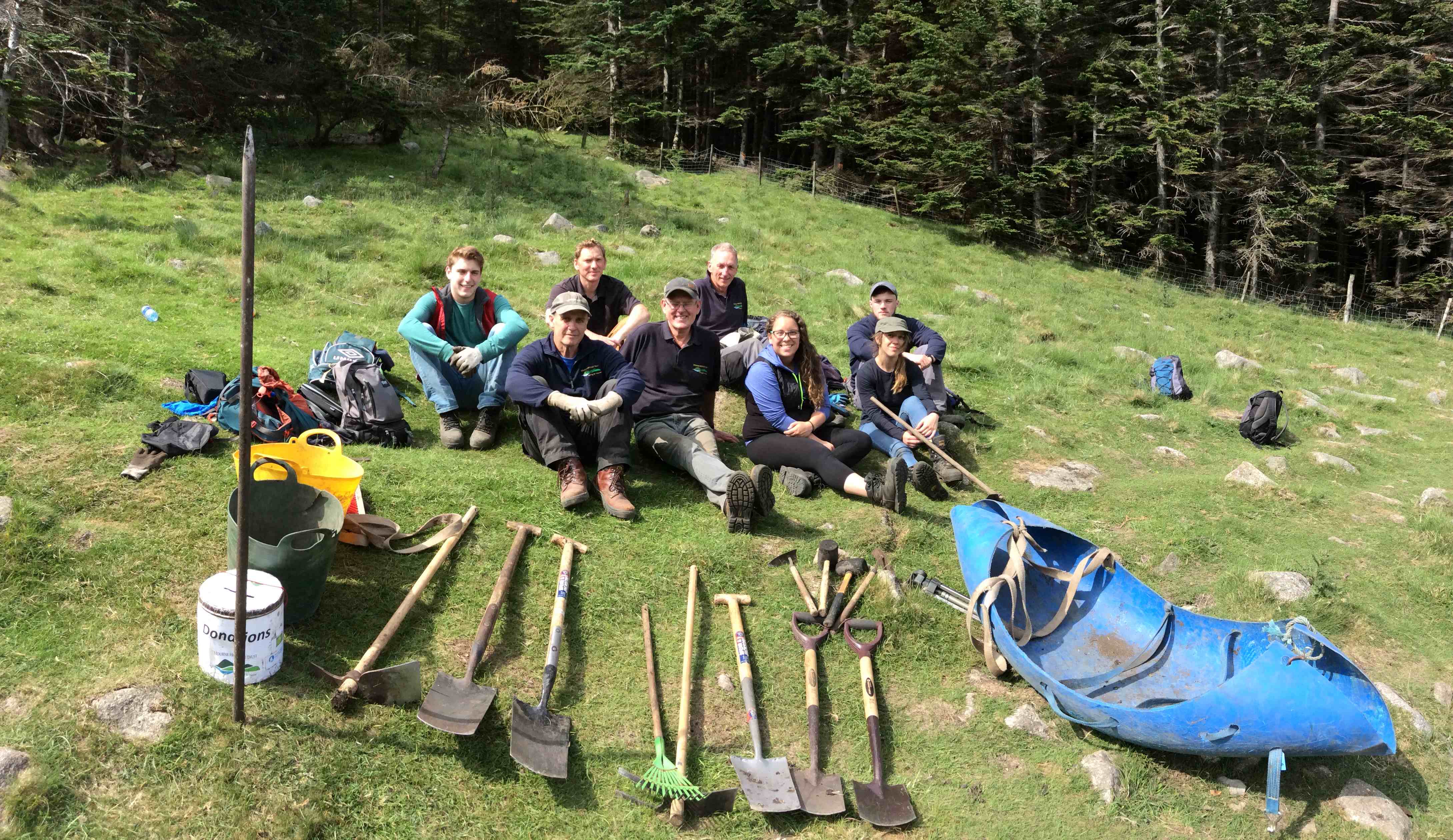
The path team also hosts many young people, such as students such as Michelle who also aspire to develop their careers in environmental protection, and are keen to learn traditional skills and develop friendships with likeminded people.
“I wanted to get involved with the path restoration project because I have a real appreciation for the Mournes and just love going on walks through them,” Michelle said.
“I feel it’s important for people to get involved as so many people enjoy the Mournes just like me and so I decided to create a donations tin for people to donate to a really important cause whilst on their walks.”
“We use both ‘manpower’ and the natural environment around the area to try and restore and protect the pathways, so there isn’t a negative impact by the work we do. There definitely is strength in numbers and many hands really do make light work!”
The volunteer pathway regeneration project is the first of the conservation work the Mourne Heritage Trust has undertaken as part of a sustainability project, called ASCENT.
Focusing on the Glen River path towards Slieve Donard, the ‘ASCENT’ project (Apply Skills and Conserve our Environment with New Tools) is in conjunction with NPA (Northern Periphery and Arctic programme). It formally started in September 2016 and involves land management agencies in Finland, Iceland, Norway, Ireland and Scotland. The key aim of the project is to trial new methods of upland conservation, and share knowledge between the project countries, all of whom face similar problems of recreation management and environmental protection in special upland areas.
If you are interested in learning more about the work of the Mourne Heritage Trust, or if you are keen to find out more about volunteering opportunities in the Mournes, visit www.Mournelive.com for details.
Before…
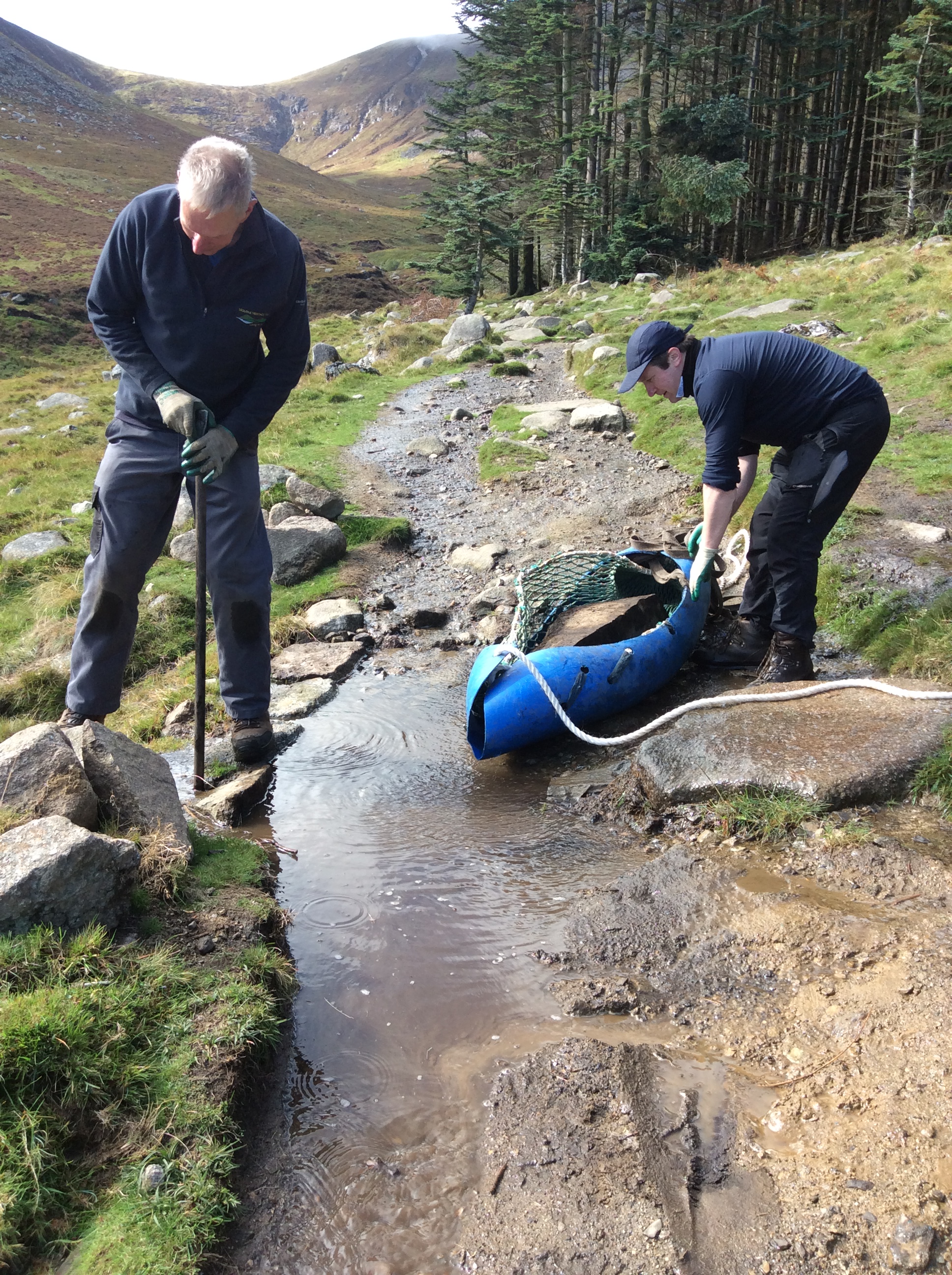
…and after!
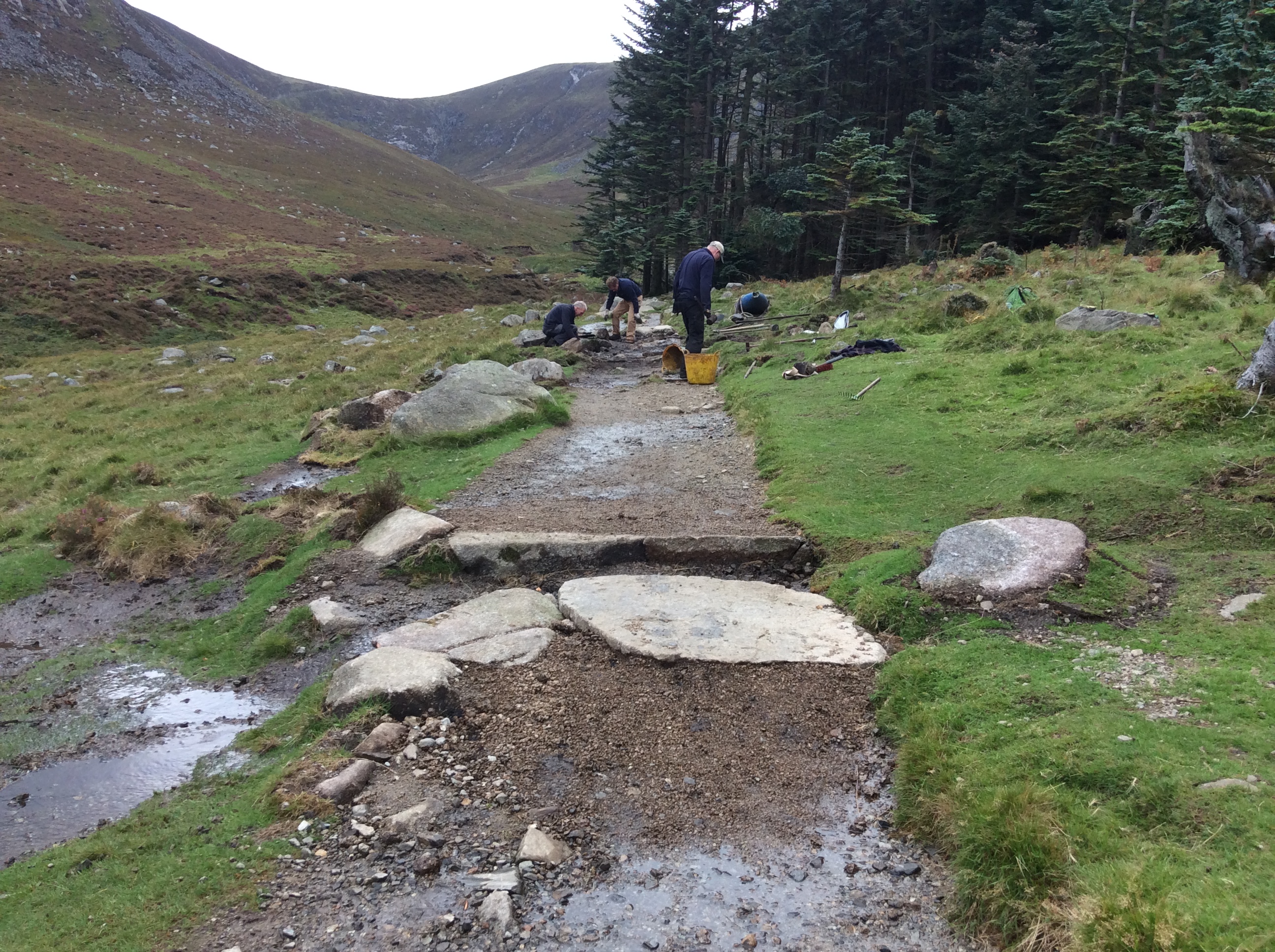
Before and after…
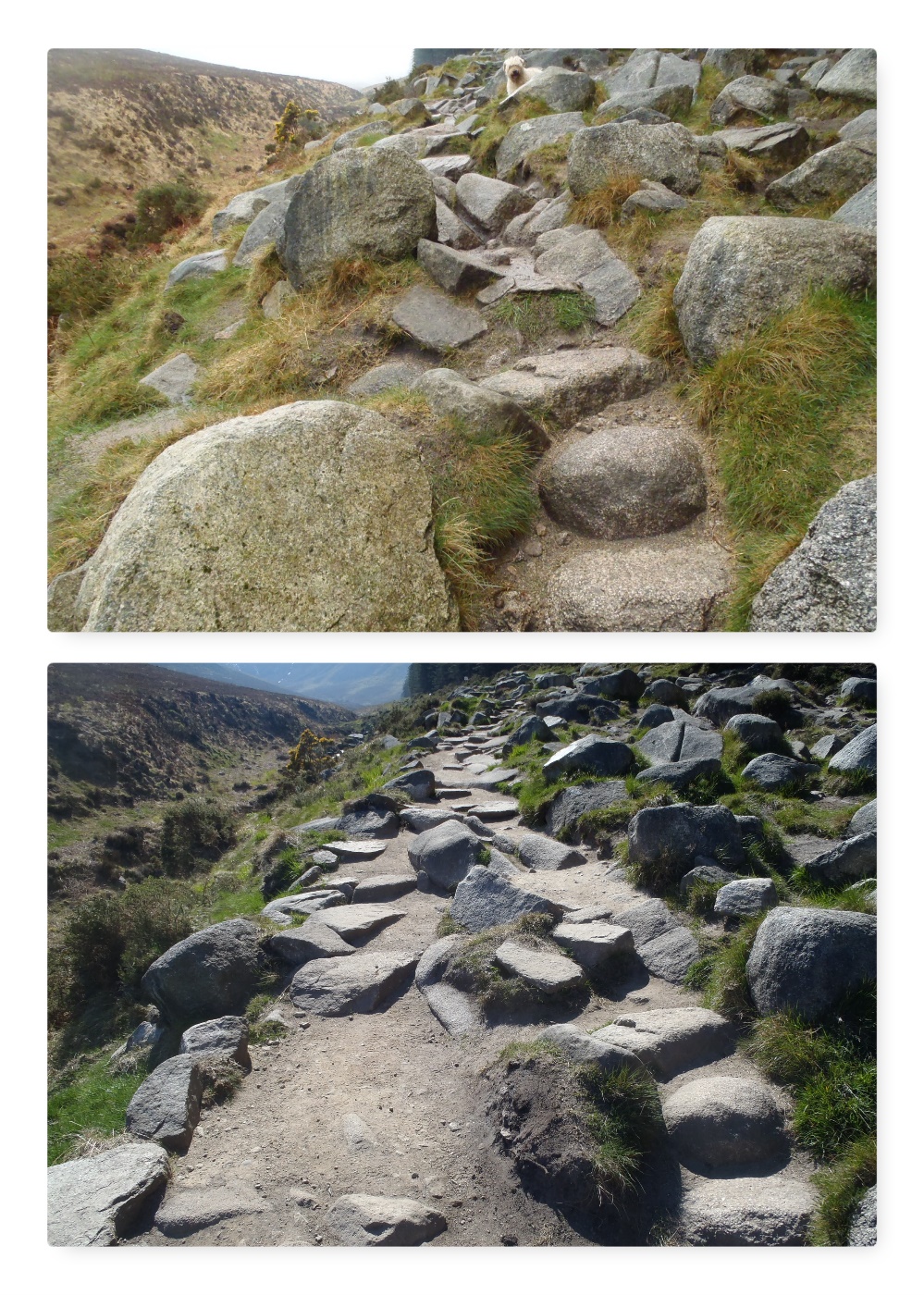
You can follow Mourne Heritage Trust on Twitter.
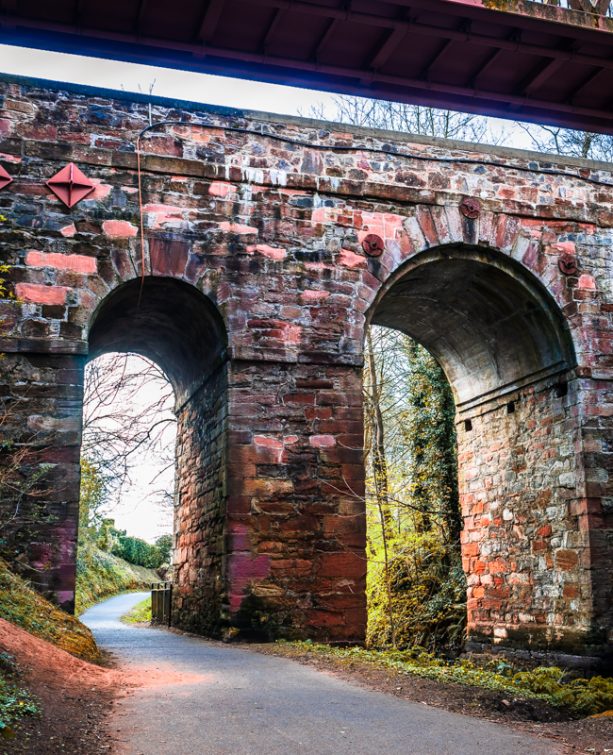 Belfast,Photography
Belfast,Photography
5 scenic walks around Lisburn
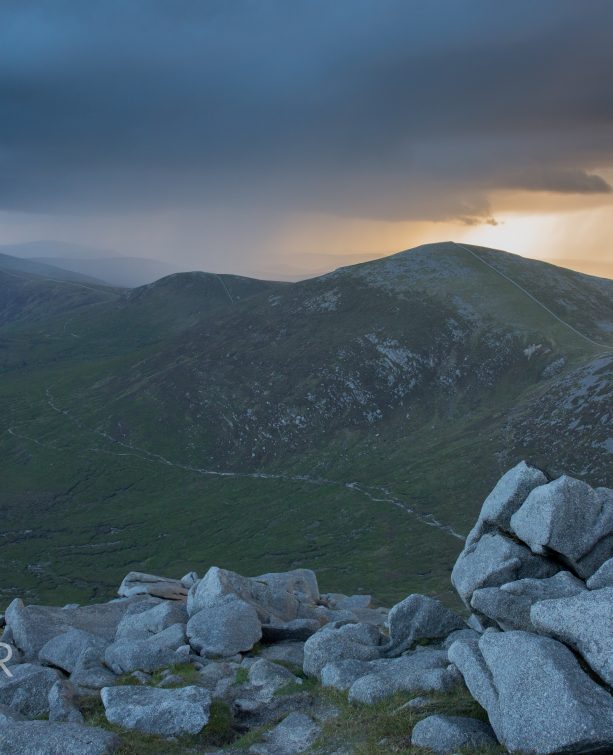 Mourne Mountains
Mourne Mountains
Bearnagh: Chased the sunset, caught the rain
 Mourne Mountains
Mourne Mountains
Camping in the High Mournes
 Fermanagh and Tyrone
Fermanagh and Tyrone
Cuilcagh: Stairway to Heaven
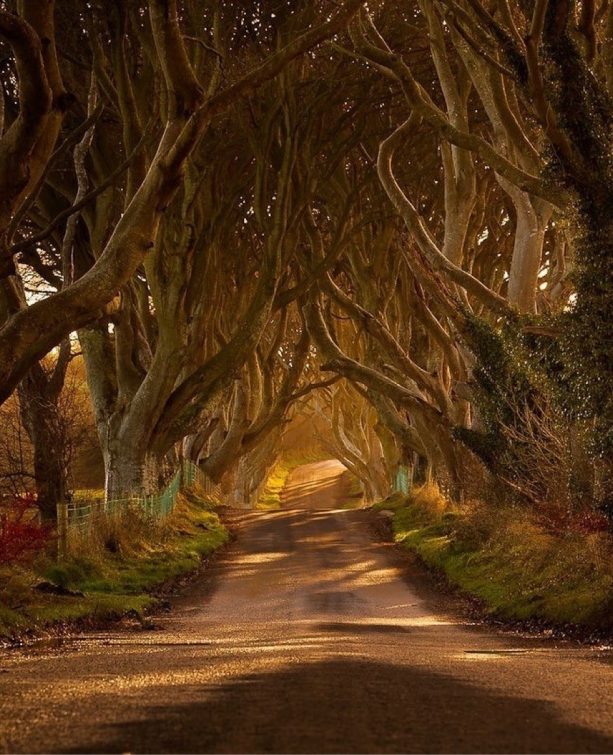 Features
Features
Every Game of Thrones Location in Northern Ireland
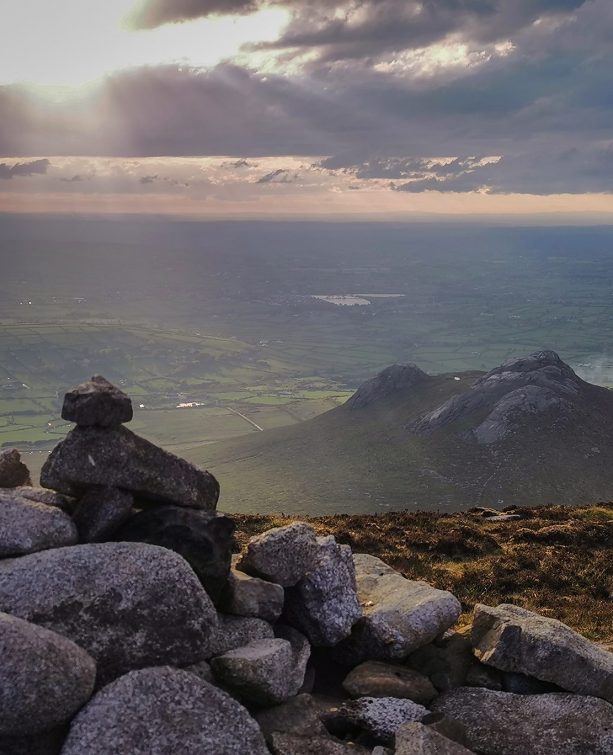 Mourne Mountains
Mourne Mountains
Hen and Cock Mountains
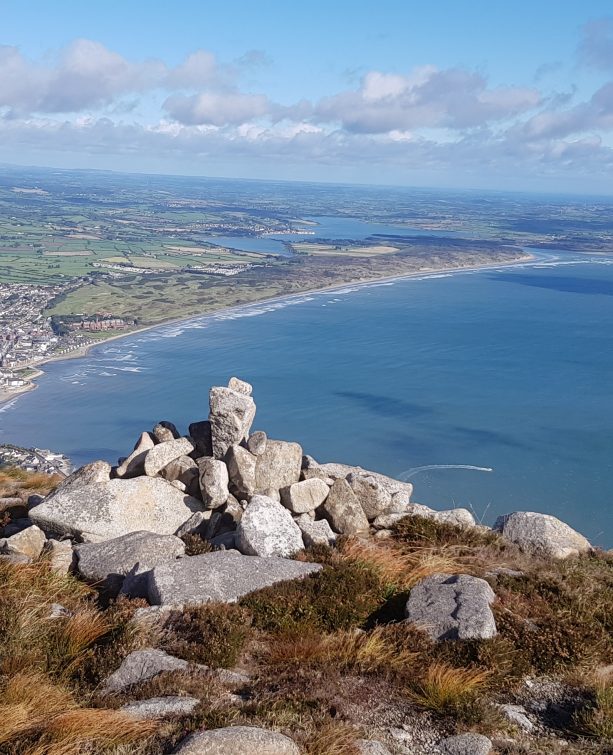 Mourne Mountains
Mourne Mountains
Leganabrachan, Millstone and Thomas: Donard’s Seaside Bodyguards
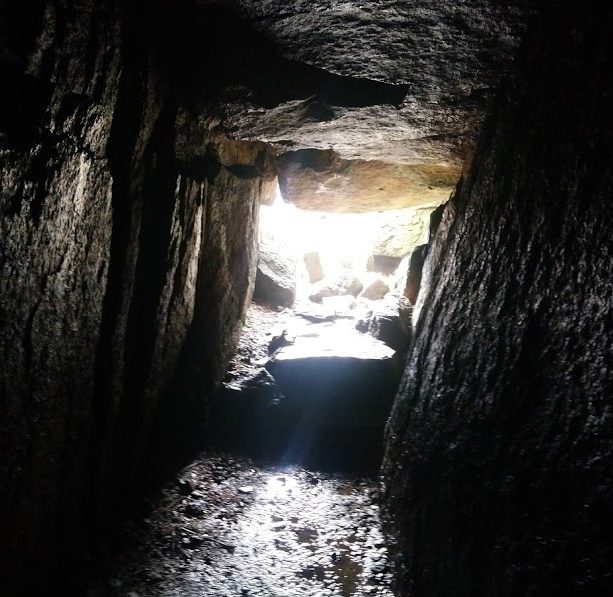 Mourne Mountains
Mourne Mountains
Percy Bysshe and Cove Caves